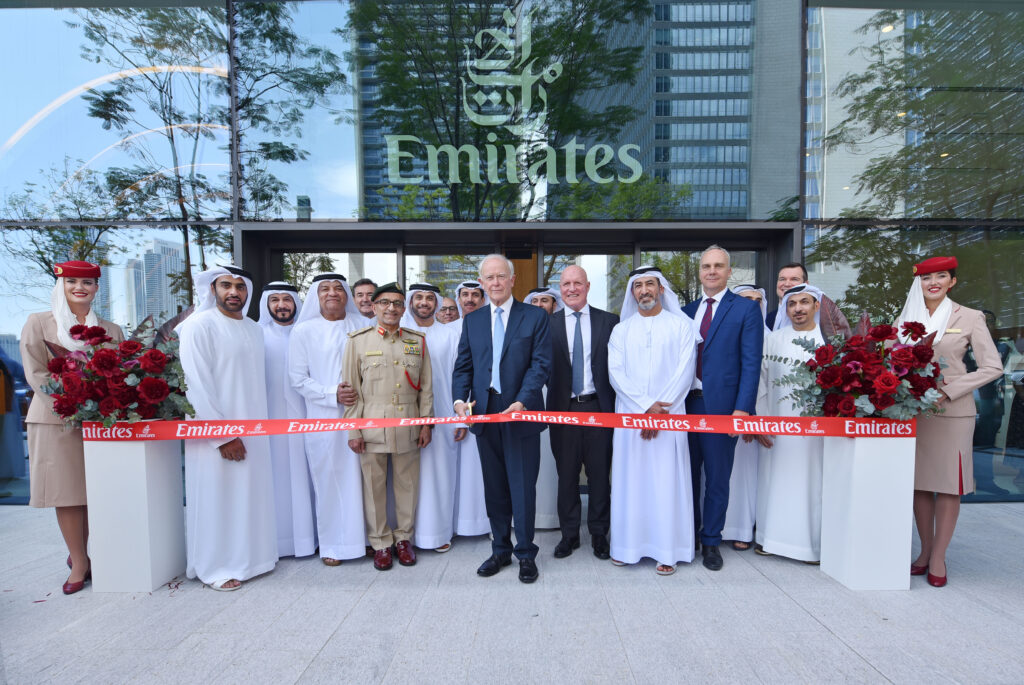Sir Tim Clark, Emirates CEO: “We Know Exactly Where We Want to Go”
Exclusive interview with Sir Tim Clark, who is expected to retire in 2024 after hosting the IATA AGM in Dubai
February 28, 2024

Photo: Sir Tim Clark, Emirates CEO. Courtesy of Andreas Spaeth
Sir Tim Clark has been with Emirates since it started in 1985 – and is still going strong as President and CEO after turning 74. With big orders at the Dubai Air Show, he recently set the scene for the Gulf carrier’s success until the late 2030s.
The Dubai Air Show in November was his home run, and Sir Tim Clark knew how to dominate the headlines for days on end, keeping manufacturers, suppliers, and media in suspense during this week in mid-November. Logically, the event, held every two years, is the ideal stage for Dubai’s powerhouse airline to put itself into the limelight, with its own turf being the stage.
As the longest-serving airline leader, Sir Tim Clark, with Emirates since its humble beginnings in 1985 and holding the top job of President and CEO since 2003, knows how to play this game masterfully. That he still is the mastermind behind every major move is a small miracle. Clark, who recently turned 74, had already announced to step down from his post by mid-2020 in late 2019. Then came the pandemic, and it wasn’t hard for his superiors to convince him to stay on to steer the airline clear of trouble.

Photo: Sir Tim Clark, Emirates CEO. Courtesy of Andreas Spaeth
While that has been achieved, Clark shows no signs of fatigue. Rather the opposite, acknowledging at London’s Airlines 2023 conference in late November how he gets a “real buzz” out of leading Emirates and arriving at his stately office overlooking Dubai Airport at 06:15 every morning.
“Does it give me a kick? Yes, of course it does”, he admits. And that was just days after a grueling air show week, with Sir Tim being one of the major players in public and behind the scenes.
On the first day, Emirates made the biggest announcement, a top-up order with Boeing for a total of 95 additional widebodies from the US, worth US$52 billion in list prices.
The shopping spree included 55 more Boeing 777-9s plus, a slight surprise, 35 777-8s in the passenger version. On top of that, Emirates altered its earlier order for 30 787-9s, converting them to 15 787-10s and 20 787-8s instead.

Photo: Emirates opens new ‘City Check-In and Travel Store’. Courtesy of Emirates.
Airbus initially went away empty-handed, and Toulouse got a consolation prize on the fourth day of the show – a small order for 15 additional Airbus A350-900s, bringing the total to 65. Later, Sir Tim blamed Rolls-Royce’s XWB-97 engines powering the bigger A350-1000 as “defective.”
He admitted to Reuters that the engine stand-off had “opened the door” again for the Boeing 777-8 as a freighter and passenger aircraft while stressing: “We were ready on the A350-1000. You have no idea how much work I’ve spent on the interiors of these airplanes.” That’s classical Clark – probably no other big airline boss anywhere gets involved as meticulously, especially in the details of aircraft interiors, as Sir Tim.

Photo: First Class Suite. Courtesy of Emirates.
During fleet meetings, his in-house experts parade their ideas and sketches in front of him, often getting rebuffed if their boss already has had other strokes of design genius. He then tells the executives, standing in front of him like schoolboys: “That’s how it’s done, now go and do it,” having scribbled some quick pencil drawings of his visions on paper right then.
After he retires from the top—expected by some after the IATA AGM he hosts in Dubai in June—Sir Tim has agreed with his Chairman that he’ll stay an adviser for everything concerning the aircraft cabin.
Literally hours before the air show started, a relaxed but sharply focused Sir Tim received Business Traveler in his office for an exclusive interview to paint the bigger picture. “I’ve been quite open about the fact that we are going to buy more aircraft to expand our network,” Clark said, describing that Emirates needs to be equipped to enter the third epoch of its history.
“The first era was from our formative years from 1985 to about the early 2000s; we transitioned ourselves, we expanded, we scaled. COVID was then the close of Emirates’ second era or epoch.”

Photo: Courtesy of Emirates
That was when the A380 appeared, “a massive disruptor to the global scene. And now, we enter a phase where we need to accept that, over time, the A380 will disappear. We know exactly what we want to do, where we want to go, and with what and how many times and in which style we want to do that by the mid-thirties. For that, we have to put our markers down now. That has been worked on now for two years; COVID was the accelerator for us,” Sir Tim explained.
There are no signs of him contemplating bailing out anytime soon. Watch this space.



